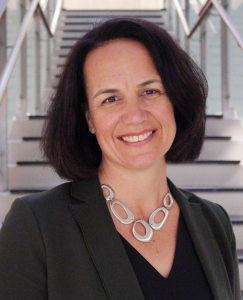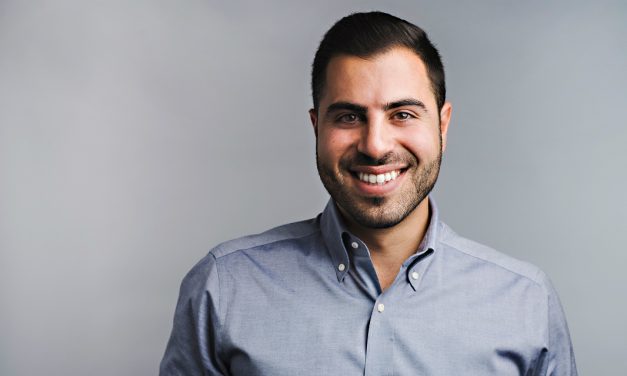Last in a four-part series called Code Now, a comprehensive look at how the Waterloo Region tech ecosystem can assist the local medical community during COVID-19 – and longer-term. In today’s concluding segment: What the post-pandemic future might look like for the medical and technology communities.
To paraphrase a quote from 18th-century British poet Samuel Johnson, a pandemic has a way of concentrating the mind wonderfully.
When COVID-19 emerged as an existential worldwide threat last month, Waterloo Region, like many Canadian jurisdictions, responded quickly and resolutely. Medical, political and business leaders moved immediately to batten down the hatches. Social distancing measures were put in place. Work moved into homes. Hospitals began to retool to handle the expected flood of cases.
And Waterloo Region’s local technology ecosystem, famous not only within Canada but outside of it, too, responded in kind. Entrepreneurs immediately began doing what they do so well – thinking on the fly, considering problems and delivering solutions designed to help the medical community. Quickly. Effectively.
Help became a watchword.
And suddenly, two universes – medicine and tech-based startups – previously largely disparate and landlocked, found a way to bridge gaps and work together as never before.

Lee Fairclough, President of St. Mary’s
Hospital.
“I really don’t wish that we were in a situation where we’re [forced to cope with] a pandemic like this, but the one thing I would say has been a benefit in trying to establish a strong working relationship with the tech sector and other sectors in this community is [the pandemic has] given us focus,” says Lee Fairclough, President of St. Mary’s Hospital.
And so, as the rate of worldwide infection shows tentative signs of slowing and people begin to cautiously test notions of what a post-pandemic world might look like, where do the local medical and tech communities go from here?
It’s fair to say that prior to the pandemic, the relationship between the medical and technology communities might be described as, well, polite. Both communities were aware that the other existed, and that each played a vital local role, but there was little in the way of real collaboration. With a few exceptions, each existed largely in isolation from the other. The result?
“We’re a long way from where we need to be,” Young Lee, Grand River Hospital’s Vice-President, Quality, Performance and Clinical Systems Transformation, told Communitech News near the outset of the pandemic.
There are many perfectly legitimate reasons why that isolation has existed.
The nature of medicine itself is one. New medical procedures and equipment must, naturally, be carefully vetted, considered, and proven safe. Peer-reviewed studies take time.
The structure of the Canadian medical system is another. Public medicine, tied to governments and large bureaucracies, moves slowly and carefully, and perhaps even with a measure of suspicion about change: At least one local doctor told Communitech News in recent days that the profit motive of private enterprise concerns him – there’s fear that the pursuit of profit will come at the expense of patient care.
“Part of the reason the health system functions the way [it does], is that we do want to be good stewards of taxpayers’ money,” says Fairclough. “So how do we strike the right balance between making sure that that is not holding us up from pursuing innovation and partnering with innovative tech companies and other companies, but by the same token, doing [so] in a responsible way so that we can fulfil our commitment to taxpayers?
“That, to me, is what sort of is at the root of all of this. I do think there’s solutions to it, though. I actually think that the general public would like to see us taking some risks.”
And that, perhaps, might ultimately emerge as one of the few silver linings since the onset of COVID-19 – that the appetite for risk has changed, knowing that the cost-benefit equation where risk goes has changed. The lethal nature of the pandemic has ensured that the status quo must change.
“I think [everything that] is happening is being driven by necessity,” says Armen Bakirtzian, CEO and co-founder of Intellijoint Surgical, a Waterloo Region-based maker of innovative medical devices.

Armen Bakirtzian,
CEO and co-founder of
Intellijoint Surgical.
“People are understanding the nature and magnitude of the situation and are really stepping up to do their part in addressing whatever they can address, which is, I think, extremely encouraging.”
As entrepreneurs in recent weeks quickly pivoted to help hospitals – making equipment, retooling manufacturing processes – they not only plugged gaps in preparedness; they built new bridges between the two worlds. Agile methodology delivered help, quickly. And the help was welcomed with open arms. Approval processes were quickened. A foundation of trust was established, one that, going forward, may prove to be not only lasting, but scaleable. Bakirtzian offers an example.
“We’re now seeing good signs [that the] federal government is procuring products on behalf of the province,” he says, explaining that prior to the pandemic, procurements were done at the provincial level.
“The major question is what happens when there’s no crisis? Does that behaviour of procuring innovation on behalf of the provinces, does that become practice now or is that going to be a memory of what we did during COVID-19? To me, that’s the major question.”
Bakirtzian has long been frustrated by the Canadian medical establishment. His company, 10 years old, makes products that help orthopedic surgeons perform hip replacements more accurately. For years the firm has found it difficult to sell within Canada. The vast majority of its sales are to the U.S. or overseas because selling at home was simply too slow and fraught.
But there are signs, now, particularly since the onset of COVID-19, of a new willingness on the part of the medical establishment, particularly locally, to engage. In much the same way that large, legacy enterprise companies realized pre-pandemic they must change and become more technologically conversant, there’s a realization that technology might well improve delivery of service for medicine and do so in a more cost-efficient manner.
“I really want this collaboration to work well between the hospitals and tech sector,” says Fairclough, adding that she has lost count of the tech-related events – peer-to-peer groups, angel investing meetings and the like – she has attended at Communitech and Velocity, the successful University of Waterloo incubator, since taking on her role at St. Mary’s in January.

Young Lee, Grand River Hospital’s
Vice-President,
Quality, Performance and
Clinical Systems Transformation.
Grand River’s Lee is equally determined.
“Our hospital has room to grow in terms of our maturity and thinking in terms of how we manage within the rules as opposed to blindly following the rules,” he says.
“And I’ll just say this: The mindset and the culture of the organization is starting to shift with fresh, new perspective.”
Indeed, doctors themselves are beginning to realize the possibility that tech-enabled change might bring.
Peter Potts, physician and Chief of Staff at both Grand River and St. Mary’s, says that locally there are “a number of physicians who are interested in innovation and entrepreneurship.”
He’d like to see doctors hired who have a predisposition to tech-based innovation. In particular, he talked recently about establishing a neurosurgery program in Waterloo Region – something that does not now exist – in collaboration with Hamilton’s McMaster University medical school. Neurosurgery, he says, is an area ripe for technological innovation as it moves to less-invasive procedures.
“We wanted to explore the possibility of hiring neurosurgeons who are interested in innovation, and entrepreneurship,” he says.
“If you said to people when you’re hiring them, ‘Look, you’re being hired as a clinician but this opportunity exists to be hired to collaborate closely with the tech community and with University of Waterloo in basic science research ….’ It’s something I think that is appealing because you could build [a culture of medical innovation] from the ground up.
“It could be a kind generator for innovation.”
Lee envisions establishing a medically-based “ideation lab” in Waterloo Region, “where we creatively think through and design development and prototyping processes,” he says.
“We say, ‘Okay, so here is said problem. We agree that this is the problem. We bring the right players to the table, we think through the design, figure out the prototype, and then we act on it.”
In the same vein – identifying problems, delivering change – Bakirtzian points out how the pandemic has exposed the lack of medical manufacturing in Canada and that there is now, as a result, a recognition that establishing the conditions for making medical equipment at home plays a role in shoring up Canadian sovereignty.

Dr. Peter Potts,
Chief of Staff at Grand River Hospital
and St. Mary’s Hospital.
“Very few tech companies in Canada have their own manufacturing capacity,” he says.
“There’s a tremendous opportunity for us to invest in domestic companies, encourage them to stay and grow in Canada and stay independent and build up their own manufacturing capacity.”
Bakirtzian, who helped spearhead the launch last January of MIX – the Medical Innovation Xchange, an industry-led hub for medtech startups, says local medtech firms are perfectly positioned to help non-medical manufacturing companies transition to manufacturing in the medical space.
“We know how to get products approved by regulators,” he says. “We know how to do traceability. We know how to do post-market surveillance. We know how to get certifications.”
To that end, Lee is helping organize what he calls a “think tank” next Tuesday, April 21, that will bring together players in the medical and technology community, and begin to discuss ways to maintain the momentum brought on by the pandemic and capitalize on the nascent collaborative interest that existed even before it began.
“What it could look like, hopefully, is an ongoing partnership whereby we have, on some regular interval or cadence, dialogue such that you, the medtech community, continues to engage with us and to understand our evolving needs and priorities over time.”
The pandemic has been, of course, nothing short of a global catastrophe in terms of its human and economic cost. One small mercy locally, one that may prove to be significant when the measures to contain the virus are past, is that the breaking down of medical and technology silos may help create opportunity for each of those communities going forward. Winds of change may be in the cool spring air.
Or, to put it another way, necessity may indeed be the mother of medical invention.

